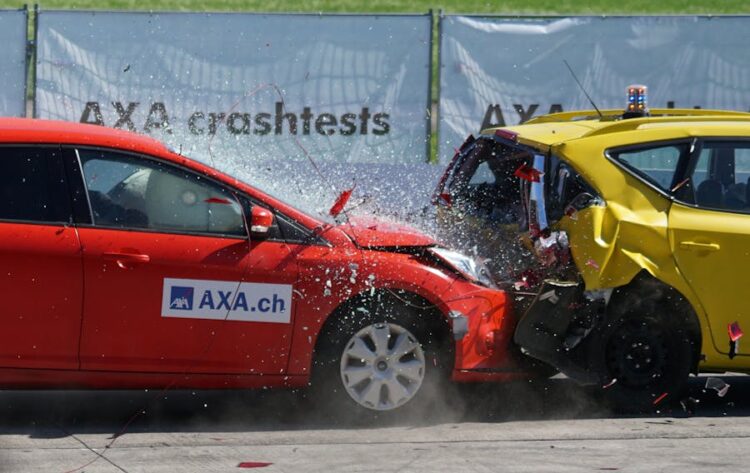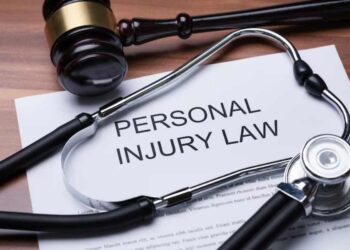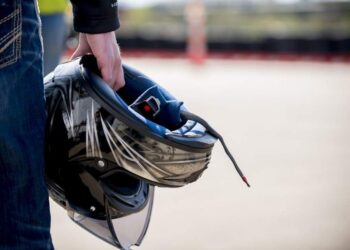Navigating the complexities of a left-turn accident can be both emotionally and legally daunting.
As the number of vehicles on the road continues to rise, so too do the occurrences of such accidents, and often leads to serious injury and conflicts over blame.
Left-turn accidents often involve drivers turning left from oncoming traffic. These events could result in significant legal challenges.
Understanding liability, insurance requirements, and legal rights is important for everyone involved in such situations. And that is what we will cover in this article.
Do You Need to Hire a Lawyer for Your Left-Turn Accident?
Yes, it is important to hire a lawyer for a left turn accident to get the rightful compensation you deserve. Legal experts are very familiar with personal injury cases.
They can help you understand your rights, gather evidence, and negotiate with insurance companies.
Additionally, an experienced attorney can represent you in court if necessary. This will ensure that your case is presented effectively and all relevant details are handled.
Causes of Left Turn Accidents
Many factors can cause left-turn accidents. Here are the five main reasons:
- Missing signal – When turning left, the driver forgot to show the intention, thus confusing other drivers.
- Failure to yield – Drivers often neglect to yield to oncoming traffic or pedestrians, resulting in a dangerous collision.
- Poor visibility – Weather conditions, blind spots, or obstacles can interfere with the driver’s judgment of the road and oncoming vehicles.
- Distracted Driving – Cell Phone technology in cars or passengers can distract the driver from the road, increasing the risk of accidents
- Speeding Vehicles – Oncoming vehicles traveling at high speeds may not have enough time to react when another driver turns left.
Proving Fault in Left Turn Accident
Left-turn crashes are often complex and involve many factors. Therefore, it is important to accurately identify who is at fault. Evidence needs to be gathered to prove fault.
These include witness accounts, traffic camera footage, and police reports.
In addition, photographs of the accident scene can also help clarify the situation at the time of the incident. It is also important to understand local traffic laws because they may affect liability.
After the Left Wing Accident, How Long Do You Have to File a Claim?
The deadline for filing a claim after a left turn accident varies depending on your jurisdiction. In general, it can take one to three years from the accident date to file a personal injury claim.
However, it is important to check local laws. These deadlines can vary greatly and may affect your ability to claim compensation.
What Are 3 Things You Must Do When Taking a Left Turn?
Making a left turn requires careful attention to ensure the safety of all road users. Here are three critical steps that every driver must take:
- Check for Oncoming Traffic
- Use Your Turn Signal
- Yield to Pedestrians and Bicyclists
Left Turns Must Yield to Oncoming Traffic
In many jurisdictions, drivers wishing to turn left yield to oncoming traffic. This includes vehicles traveling in straight and vehicles turning right from the opposite direction.
Understanding and following this law will help promote a more efficient and safer road environment.
Always check your mirrors and blind spots before turning left to reduce risk and promote responsible driving behavior.
Exceptions to the Left-Turn Rule
The left-turn rule requires the driver to make the turn to ensure safety. However, there are notable exceptions where circumstances may shift fault away from the left-turn driver.
Understanding these exceptions is important for both drivers and legal professionals. Here are the main scenarios in which a left-turning driver may not be held entirely responsible for an accident:
1. Violations of Traffic Rules by the Straight-Going Vehicle
If a vehicle driving straight fails to obey traffic signals, such as running a red light, the court may find the driver who went straight on was at fault.
Or at least some of it is to blame. Often this claim is substantiated through eyewitness or traffic camera footage.
2. Excessive Speeding by the Straight-Going Vehicle
In cases where the driver proceeding straight significantly exceeds the speed limit, this may diminish the left-turn driver’s fault.
However, proving this can be challenging. The left-turn driver typically cannot accurately gauge the speed of an oncoming vehicle.
3. Unforeseen Circumstances
In some cases, left-turning drivers can initiate turns when it is safe. However, unforeseen circumstances may prevent the vehicle from completing the turn.
Factors such as sudden obstacles, the other car’s erratic behavior, or poor conditions may cause drivers to swerve or slow down unexpectedly.
If a left-turning driver can demonstrate that they acted in good faith and unexpected situations led to the accident, this may be waived or reduced.
4. Driver Impairment or Distraction
A motorist approaching an intersection from the opposite direction is under the influence of drugs or alcohol or is distracted and will be responsible for the crash.
When carelessness causes an accident, a strong argument arises over whether the driver who turned left was not at fault.
Evidence such as a toxicology report or traffic violation involving a motorist driving in the right lane might strengthen the case for a motorist making a left turn.
5. Invalid Driver’s License
If the straight-going driver does not possess a valid driver’s license at the time of the accident, this may also cause some fault.
The failure to maintain proper licensing mandates raises questions about the driver’s competence and legality on the road.
In such cases, the left-turn driver can argue that the unlicensed driver’s reckless decision-making contributed to the accident.
Conclusion
Winning a left-turn accident case requires a clear understanding of the cause, legality, and compliance with reasonable deadlines.
By familiarizing yourself with the factors, you can increase your chances of successfully getting your claim.
Taking immediate action and seeking professional advice will enhance your chance of successfully winning the case. Being informed and prepared is your best bet for the best results.










